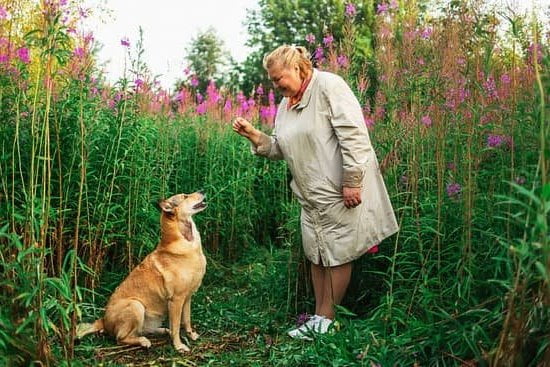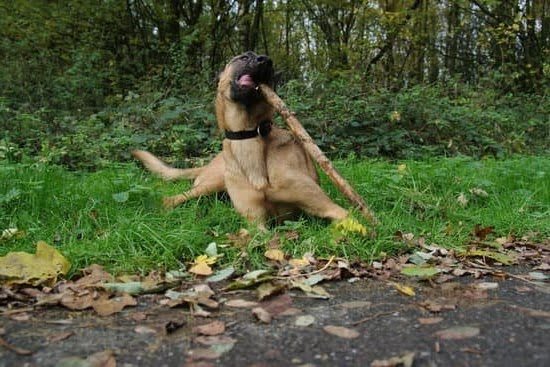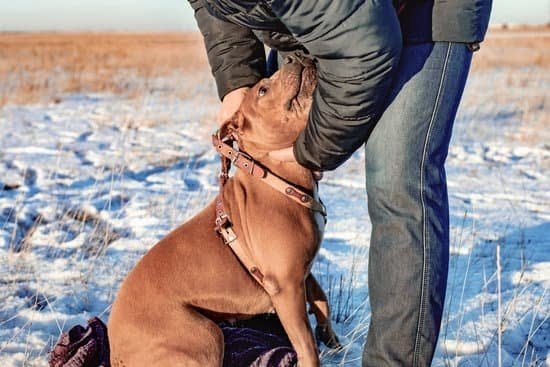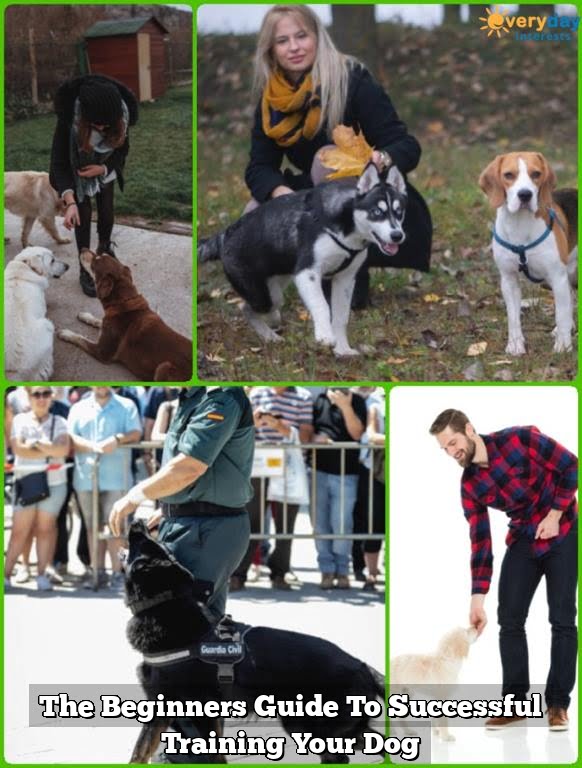Thinking about how to train your own guide dog can be a daunting task for many pet owners. Guide dogs are specially trained to assist individuals with visual impairments in navigating their surroundings safely and independently. These incredible animals play a crucial role in enhancing the quality of life for their handlers by providing guidance, support, and companionship.
Training your own guide dog comes with numerous benefits that go beyond just having a well-trained pet. By taking on the responsibility of training your guide dog, you can develop a strong bond with your furry companion, customize the training to suit your specific needs, and gain a sense of accomplishment from successfully completing each aspect of the training process.
Before diving into guide dog training, it’s essential to start by selecting the right breed that possesses the necessary characteristics such as intelligence, adaptability, and a calm demeanor. Building a solid foundation through basic obedience training is key to creating a well-behaved guide dog who can effectively assist you in everyday tasks. Stay tuned to explore advanced training techniques, task-specific commands, socialization tips, overcoming challenges during training, certification procedures, and legal considerations for guide dogs.
Benefits of Training Your Own Guide Dog
The benefits of training your own guide dog are numerous and can have a significant impact on both you and your dog. One of the main advantages is the strong bond that is formed between you and your guide dog during the training process.
By taking an active role in the training, you are able to develop a deep connection based on trust, communication, and mutual understanding. This bond is crucial for a successful guide dog partnership as it enhances working efficiency and strengthens the relationship between you and your companion.
Another benefit of training your own guide dog is the ability to customize the training program to fit both your needs and those of your dog. Each individual has unique preferences, lifestyle, and requirements, which can be taken into account during the training process.
By tailoring the training techniques, tasks, and commands to suit your specific circumstances, you can create a personalized experience that focuses on areas that are most important to you. This level of customization leads to a more effective training regime and ensures that your guide dog is well-equipped to assist you in various situations.
Moreover, when you train your own guide dog, you have greater control over the entire process from start to finish. You can monitor progress closely, address any issues promptly, and make adjustments as needed to achieve optimal results. This hands-on approach gives you a sense of empowerment and accomplishment as you witness the growth and development of your guide dog under your guidance.
Additionally, being actively involved in the training enhances your knowledge, skills, and confidence in handling a service animal effectively. By investing time and effort into training your own guide dog, you not only gain a reliable companion but also acquire valuable experience that can benefit you both now and in the future.
| Benefits | Details |
|---|---|
| Strong Bond | Deep connection based on trust |
| Customization | Personalized training program tailored to individual needs |
| Control | Hands-on approach with greater control over entire training process |
Getting Started
Training your own guide dog can be a rewarding and fulfilling experience for both you and your canine companion. One of the first steps in embarking on this journey is choosing the right breed for guide dog training. Selecting a breed that is known for its intelligence, willingness to learn, and good temperament is essential for successfully training a guide dog. Here are some breeds that are commonly chosen for guide dog training:
- Labrador Retriever: Labs are one of the most popular breeds for guide dog training due to their gentle nature, high intelligence, and strong work ethic.
- Golden Retriever: Golden Retrievers are another popular choice for guide dog training because of their friendly and sociable personality, making them great partners for those with visual impairments.
- German Shepherd: Known for their loyalty and obedience, German Shepherds also make excellent guide dogs as they are quick learners and have a natural protective instinct.
Before selecting a breed, it’s important to consider factors such as size, energy level, grooming needs, and overall compatibility with your lifestyle. Additionally, working with reputable breeders or rescue organizations that specialize in breeding and training guide dogs can help ensure that you find a suitable candidate for training.
Once you have chosen the right breed for guide dog training, it’s time to start building a strong foundation through basic obedience training. This will lay the groundwork for more advanced tasks and commands that your guide dog will need to master.
Consistency, positive reinforcement, and patience are key when teaching basic obedience skills such as sit, stay, come, heel, and leave it. By establishing clear communication with your canine partner from the beginning, you will set the stage for a successful guide dog training journey.
Basic Obedience Training
Consistency Is Key
Consistency is key when it comes to basic obedience training for guide dogs. Make sure to use the same cues and hand signals each time you ask your dog to perform a command. Repetition is also important in reinforcing the desired behaviors, so be patient and consistent in your training efforts. Positive reinforcement, such as treats or praise, can be used to motivate your guide dog during obedience training sessions.
Leash Training
Leash training is an essential part of basic obedience training for guide dogs. Teach your dog to walk politely on a leash without pulling or lagging behind. Use a sturdy harness or collar that is comfortable for your guide dog, and practice walking together in various environments to help them get accustomed to different stimuli. Remember to reward good leash manners with treats or praise to encourage positive behavior while on walks.
Focus and Attention
Another crucial aspect of basic obedience training for guide dogs is teaching them how to focus and pay attention to you amidst distractions. Practice short training sessions in different settings with increasing levels of distraction to help improve your dog’s ability to remain focused on you. Use rewards strategically to reinforce focus and attention, gradually building up their concentration skills over time.
Advanced Training Techniques for Guide Dogs
Once your guide dog has mastered basic obedience training, it is time to move on to more advanced techniques to enhance their skills as a service animal. Advanced training for guide dogs focuses on sharpening their abilities to navigate complex environments and handle various situations with confidence.
One key aspect of advanced training is teaching your guide dog specialized commands that are tailored to your specific needs or daily routines. These commands can include navigating around obstacles, finding specific locations, or alerting you to potential dangers. Consistent practice and reinforcement are essential to solidify these commands in your guide dog’s repertoire.
In addition to specialized commands, advanced training techniques may also involve simulating real-life scenarios for your guide dog to navigate. This can include practicing navigating busy streets, crowded public spaces, or even using different modes of transportation.
Exposing your guide dog to a variety of environments will help them feel confident and comfortable in any situation they may encounter while assisting you. Remember, patience and positive reinforcement are key when implementing these advanced training techniques in order to ensure the success of your guide dog as they learn and grow in their role as your loyal companion.
Training for Specific Tasks and Commands
When it comes to training your own guide dog, one of the key aspects is teaching them specific tasks and commands that will assist you in navigating your daily life. These tasks are essential for the safety and independence of both you and your guide dog. Here are some important tasks and commands you can start working on with your guide dog:
- Curb Approach: Teaching your guide dog how to approach a curb safely and stop before stepping off the sidewalk is crucial for your safety when crossing streets. Practice this task in various environments to ensure your guide dog can apply it consistently.
- Stair Navigation: Training your guide dog to safely navigate stairs, whether going up or down, is another important skill they need to learn. Start with small sets of stairs and gradually increase the difficulty as they become more confident.
- Object Retrieval: In case you drop something or need assistance picking up an object, teaching your guide dog how to retrieve items for you can be incredibly helpful. This task requires patience and consistency during training sessions.
In addition to these specific tasks, it’s also crucial to reinforce basic obedience commands such as sitting, staying, and walking on a leash. These foundational skills provide a solid base for more advanced training techniques that will enhance the bond between you and your guide dog.
Moreover, incorporating positive reinforcement methods such as treats, praise, and clicker training can be highly effective in teaching your guide dog new tasks and commands. Consistency, patience, and clear communication are key in guiding them through the learning process towards becoming a reliable companion in assisting you with daily tasks. With dedication and proper guidance, you can successfully train your own guide dog to meet your unique needs and enhance your quality of life.
Socialization Tips for Guide Dogs
Socialization is a crucial aspect of training your own guide dog. It involves exposing your dog to various environments, people, and animals in order to ensure they are comfortable and well-behaved in any situation they may encounter. Proper socialization can help guide dogs become more confident, adaptable, and focused on their tasks. Here are some tips on how to effectively socialize your guide dog:
Start Early and Stay Consistent
One of the key aspects of socialization is starting early. Expose your guide dog to different sounds, sights, smells, and textures from a young age. This will help them become accustomed to new experiences and prevent fear or anxiety later on. Be consistent in your socialization efforts by regularly exposing your dog to new stimuli throughout their training.
Positive Reinforcement
Use positive reinforcement techniques such as treats, praise, and toys to reward good behavior during socialization. This will help your guide dog associate new experiences with positive outcomes, making them more willing to engage with unfamiliar situations in the future. Avoid punishment or harsh corrections, as this can lead to fear or aggression in your dog.
Gradual Exposure
When socializing your guide dog, gradually increase the level of difficulty and complexity of the environments you expose them to. Start with quiet, familiar places and slowly introduce busier areas with more distractions. Monitor your dog’s behavior closely and be prepared to provide support or guidance if they become overwhelmed. By slowly building up their exposure over time, you can help your guide dog develop the confidence and skills needed to navigate different surroundings effectively.
By following these socialization tips, you can help prepare your guide dog for their important role as a trusted companion and helper. Remember that every dog is unique, so adapt your approach based on their individual needs and personality traits. With patience, consistency, and positive reinforcement, you can successfully socialize your guide dog for a fulfilling partnership together.
Overcoming Challenges in Guide Dog Training
Training your own guide dog can be an incredibly rewarding experience, but it does come with its fair share of challenges. One common challenge that many trainers face is maintaining consistency in training. Guide dogs need a structured routine and clear communication from their trainers to excel in their roles. It can be difficult to stay on track with training schedules and reinforcement techniques, but consistency is key to success.
Another challenge that may arise when training your own guide dog is handling distractions in public settings. Guide dogs need to remain focused and attentive at all times, regardless of the various stimuli present in their environment. To overcome this challenge, trainers can gradually introduce distractions during training sessions and reward their guide dogs for maintaining focus. With practice and patience, guide dogs can learn to navigate through busy streets and crowded areas with ease.
Additionally, some guide dog trainers may struggle with teaching specific tasks or commands to their dogs due to individual differences in learning styles. It’s important for trainers to adapt their training methods based on their guide dog’s unique needs and abilities. By seeking guidance from experienced trainers or professional organizations, individuals can learn effective techniques for addressing specific training challenges and help their guide dogs reach their full potential.
Certification and Legal Considerations for Guide Dogs
Training your own guide dog can be a fulfilling experience, but it’s important to understand the certification and legal considerations that come with having a guide dog. Certification is crucial for ensuring that your dog is recognized as a service animal and allowed access to public places. The process may vary depending on where you reside, so it’s essential to research the specific requirements in your area.
One of the most common certifications for guide dogs is through reputable organizations such as Guide Dogs for the Blind or Assistance Dogs International. These organizations provide rigorous training programs and evaluations to ensure that guide dogs meet high standards of behavior and obedience. Once your dog has completed their training, they will undergo an assessment to determine if they are suitable for guiding someone with visual impairments.
In addition to certification, there are also legal considerations to be aware of when training your own guide dog. The Americans with Disabilities Act (ADA) protects the rights of individuals with disabilities who rely on service animals, including guide dogs.
It’s important to familiarize yourself with ADA guidelines regarding service animals in order to advocate for your rights as a handler of a guide dog. By understanding the certification and legal considerations for guide dogs, you can ensure that your four-legged companion is recognized and respected as a valuable partner in enhancing your independence and mobility.
Conclusion
Training your own guide dog can be a challenging yet incredibly rewarding journey. By understanding the vital role a guide dog plays in enhancing the independence and mobility of individuals with visual impairments, you are not only providing a valuable service, but also forging a strong bond with your furry companion. The benefits of training your own guide dog are numerous, from having full control over the training process to developing a deeper connection with your canine partner.
Choosing the right breed for guide dog training is crucial in setting the foundation for success. Basic obedience training is essential in building trust and communication between you and your guide dog. With advanced training techniques and specific task commands, you can tailor your guide dog’s skills to meet your unique needs and lifestyle. Socialization tips also play a key role in ensuring that your guide dog is comfortable and confident in various environments.
Despite the challenges that may arise during the training process, overcoming obstacles through patience, consistency, and positive reinforcement will ultimately lead to a confident and capable guide dog. It is important to navigate through certification and legal considerations to ensure that your guide dog is properly recognized and allowed access to public spaces.
In conclusion, the journey of training your own guide dog is not just about teaching commands; it is about building a strong partnership based on trust, respect, and unwavering teamwork.
Frequently Asked Questions
Can You Train a Guide Dog Yourself?
Training a guide dog yourself is not recommended for several reasons. Professional guide dog training programs have specific expertise, resources, and experience to provide comprehensive training that meets the needs of visually impaired individuals.
How Many Months Does It Take to Train a Guide Dog?
The process of training a guide dog typically takes around 4-5 months, although this can vary depending on the individual dog and the program. The training involves teaching the dog essential skills such as navigating obstacles, obeying commands, and safely guiding a visually impaired person.
How Can My Dog Become a Guide Dog?
If you are interested in having your dog become a guide dog, you can start by researching reputable guide dog training organizations in your area. These organizations often have specific requirements for potential guide dogs, including good health, temperament, and behavior. Your dog will undergo an evaluation to determine if they are suitable for guide work before beginning formal training.

Welcome to the blog! I am a professional dog trainer and have been working with dogs for many years. In this blog, I will be discussing various topics related to dog training, including tips, tricks, and advice. I hope you find this information helpful and informative. Thanks for reading!





